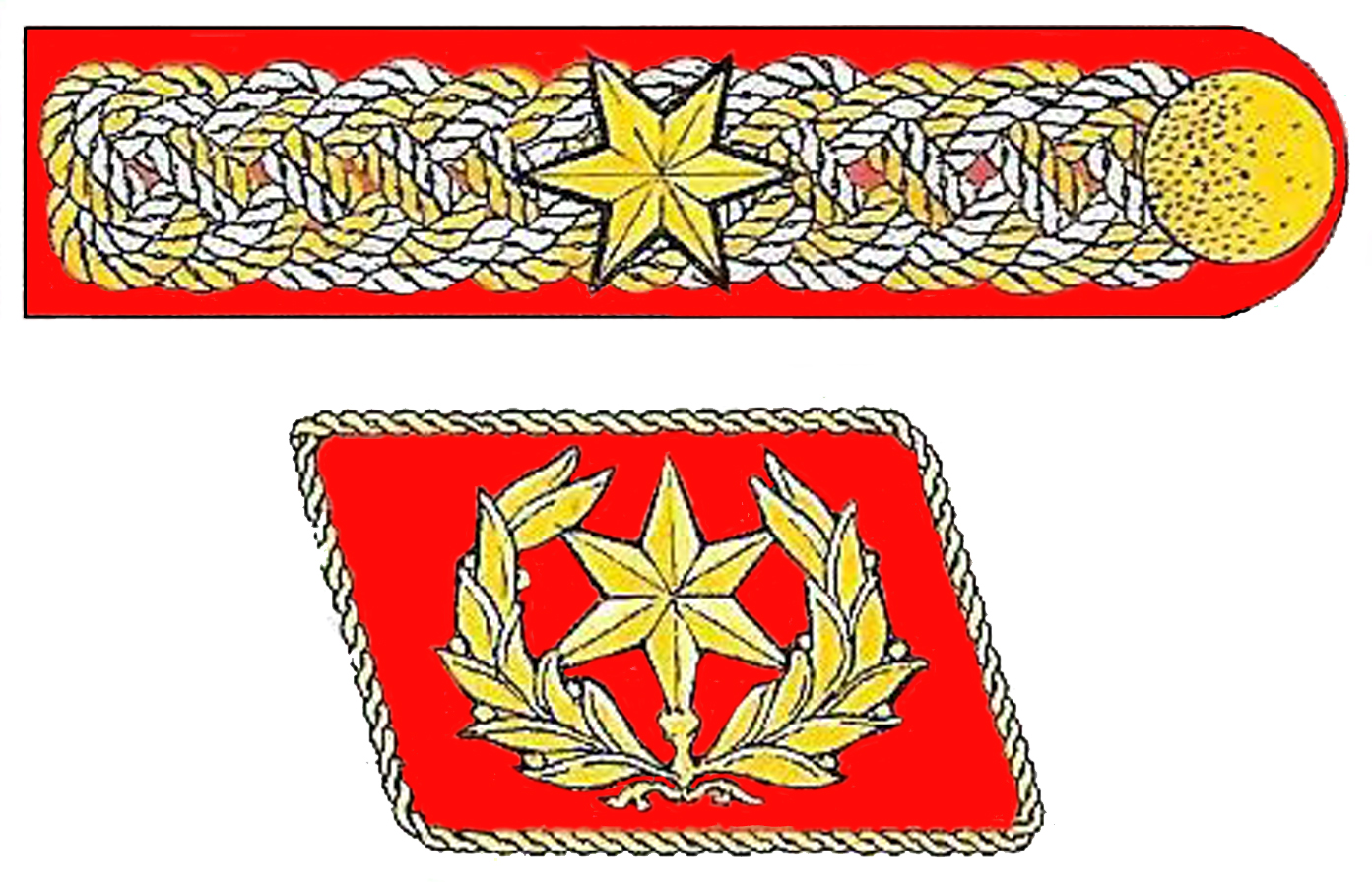|
Sturmführer
''Sturmführer'' (, "storm leader") was a paramilitary rank of the Nazi Party which began as a title used by the ''Sturmabteilung'' (SA) in 1925 and became an actual SA rank in 1928. Translated as "storm leader or assault leader", the origins of the rank dated to the First World War when the title of ''Sturmführer'' was used by leaders of German shock troops and special action companies.Hermann Weiß (publisher) "Biographical lexicon to the Third Reich". Fischer pocket-book publishing house, Frankfurt on Main 2002 (appendix). By 1930, ''Sturmführer'' had become the lowest commissioned officer (CO) rank of several Nazi Party paramilitary organizations, including the SA. The title was also used as an SS rank until 1934 when after the Night of the Long Knives the SS renamed the rank ''Untersturmführer'', which was the equivalent to a second lieutenant in other military organizations. Insignia SA-Sturmführer.svg, SA Gorget patches Gorget patches (collar tabs, collar pat ... [...More Info...] [...Related Items...] OR: [Wikipedia] [Google] [Baidu] |
SA Rank
The uniforms and insignia of the ''Sturmabteilung'' ( SA) were Nazi Party paramilitary ranks and uniforms used by SA stormtroopers from 1921 until the fall of Nazi Germany in 1945. The titles and phrases used by the SA were the basis for paramilitary titles used by several other Nazi paramilitary groups, among them the ''Schutzstaffel'' (SS). Early SS ranks were identical to the SA, since the SS was originally considered a sub-organisation of the ''Sturmabteilung''. Origins of SA titles (1921–1923) The brown shirted stormtroopers of the ''Sturmabteilung'' gradually come into being within the Nazi Party beginning in 1920. By this time, Adolf Hitler had assumed the title of ''Führer'' of the Nazi Party, replacing Anton Drexler who had been known as the more democratically elected Party Chairman. Hitler began to fashion the Nazi Party on fascist paramilitary lines and, to that end, the early Nazis of the 1920s would typically wear some sort of paramilitary uniform at party meet ... [...More Info...] [...Related Items...] OR: [Wikipedia] [Google] [Baidu] |
Untersturmführer
(, ; short: ''Ustuf'') was a paramilitary rank of the German ''Schutzstaffel'' (SS) first created in July 1934. The rank can trace its origins to the older SA rank of '' Sturmführer'', which had existed since the founding of the SA in 1921. The rank of ''Untersturmführer'' was senior to '' Hauptscharführer'' (or '' Sturmscharführer'' in the Waffen-SS) and junior to the rank of ''Obersturmführer''. Overview ''Untersturmführer'' was the first commissioned SS officer rank, equivalent to a second lieutenant in other military organizations. The insignia consisted of a three silver pip collar patch with the shoulder boards of an army lieutenant. Because of the emphasis the SS placed on the leadership of their organization, obtaining the rank of ''Untersturmführer'' required a screening and training process different from the standard promotion system in the enlisted ranks. In the early days of the SS, promotion to ''Untersturmführer'' was simply a matter of course as an ... [...More Info...] [...Related Items...] OR: [Wikipedia] [Google] [Baidu] |
Comparative Ranks Of Nazi Germany
The comparative ranks of Nazi Germany contrasts the Military rank, ranks of the Wehrmacht to a number of Nazi Party organisations in Nazi Germany from 1933 to 1945 in a synoptic table. Nazi organisations used a hierarchical structure, according to the so-called ''Führerprinzip'' (leader principle), and were oriented in line with the rank order system of the Wehrmacht. Nazi rank structure in comparison to the Wehrmacht Officer ranks Enlisted See also *Comparative military ranks of World War II *Glossary of German military terms *Glossary of Nazi Germany *World War II German Army ranks and insignia Notes References Citations Bibliography * * * * * * * * * * * * * * * Further reading * Wolfgang Benz (editor): ''Wie wurde man Parteigenosse? Die NSDAP und ihre Mitglieder.'' Fischer-Taschenbuch-Verlag, Frankfurt am Main 2009, (''Fischer'' 18068 ''Die Zeit des Nationalsozialismus''). * {{DEFAULTSORT:Ranks Wehrmacht Sturmabteilung Nazi SS Nazi Par ... [...More Info...] [...Related Items...] OR: [Wikipedia] [Google] [Baidu] |
Leutnant
() is the lowest junior officer rank in the armed forces of Germany ( Bundeswehr), the Austrian Armed Forces, and the military of Switzerland. History The German noun (with the meaning "" (in English "deputy") from Middle High German «locum tenens» (in English "place holder") was derived from the French word about 1500. In most German-speaking armies it is the lowest officer rank (in German-speaking navies (English "Lieutenant at sea")). In the German Bundeswehr the ranks and belong to the rank group. In some other armed forces (such as the former National People's Army) there is the lower grade of Unterleutnant. From about 1500 until the middle of the 17th century the designation of was commonly used for any deputy to a commanding officer. So at the army level there was the appointment of (English "lieutenant-general"), at the regimental level there was that of (English "lieutenant-colonel"), and at the company level the was deputy to a (English "captain"). Wi ... [...More Info...] [...Related Items...] OR: [Wikipedia] [Google] [Baidu] |
National Socialist Flyers Corps
The National Socialist Flyers Corps (; NSFK) was a paramilitary aviation organization of the Nazi Party. History NSFK was founded 15 April 1937 as a successor to the German Air Sports Association; the latter had been active during the years when a German air force was forbidden by the Treaty of Versailles. The NSFK organization was based closely on the para-military organization of the ''Sturmabteilung'' (SA). A similar group was the National Socialist Motor Corps (NSKK). During the early years of its existence, the NSFK conducted military aviation training in Glider aircraft, gliders and private airplanes. Leadership Friedrich Christiansen, originally a ''Generalleutnant'' then later a Luftwaffe ''General der Flieger'', was NSFK ''Korpsführer'' from 15 April 1937 until 26 June 1943, followed by ''Generaloberst'' Alfred Keller until 8 May 1945. Hermann Goering as Reich Marshal was nominal head of the NSFK and was occasionally consulted on issues surrounding heavy transport, as ... [...More Info...] [...Related Items...] OR: [Wikipedia] [Google] [Baidu] |
Oberfeldwebel
(; OFw or OF) is the fourth highest non-commissioned officer (NCO) rank in German Army and German Air Force. History The rank was introduced first by the German Reichswehr in 1920. Preferable most experienced Protégée-NCO of the old army have been promoted. Within the Reichswehr, was taken over as second-highest Protégée-NCO rank by the German Wehrmacht in 1935. In the military branch cavalry, artillery and anti-aircraft artillery it was called Oberwachtmeister. The equivalent rank to the Oberfeldwebel in the Waffen-SS was the SS-Hauptscharführer from 1938 until 1945. The rank has been used in the GDR National People's Army from 1956 until 1990 as well. Rank information It is grouped as OR6 in NATO, equivalent in the US Army to Staff Sergeant, or in British Army / RAF to Sergeant Sergeant (Sgt) is a Military rank, rank in use by the armed forces of many countries. It is also a police rank in some police services. The alternative spelling, ''serjeant'', i ... [...More Info...] [...Related Items...] OR: [Wikipedia] [Google] [Baidu] |
OR-7
OR-7, also known as Journey, was a male gray wolf that was electronically tracked as he migrated from the Wallowa Mountains in the northeastern corner of the U.S. state of Oregon to the southern Cascade Range. After the wolf dispersed from his natal pack in 2011, he wandered generally southwest for more than through Oregon and northern California. He was the first confirmed wild wolf in western Oregon since 1947 and the first in California since 1924. By 2014, OR-7 had settled in the Rogue River watershed in the southern Cascade Range east of Medford, Oregon, with a mate. It is not known when the two wolves met, but DNA tests of fecal samples showed that she is related to wolves in two of the eight packs in northeastern Oregon. In early 2015, officials designated the two adult wolves and their offspring as the ''Rogue Pack'', the first wolf pack in western Oregon and the state's ninth overall since wolves returned to Oregon from Idaho in the 1990s. The batteries in OR-7's tra ... [...More Info...] [...Related Items...] OR: [Wikipedia] [Google] [Baidu] |
OR-8
A NATO standard grade scale is used by the NATO and its partners for the purpose of comparing military ranks across the member nations militaries, as well as for a number of administrative tasks. Rank codes NATO maintains a "standard rank scale" which is also known as a "standardized reference system" in an attempt to standardize NATO codes of rank for military personnel and indicated correspondence with nations ranks. NATO's standardized reference system is intended to be used "by nations when preparing personnel tables, requisitions, reports and returns destined for NATO nations, organizations and commands." The NATO rank reference code categories were established in STANAG 2116 (formally titled ''NATO Codes for Grades of Military Personnel''). The current- 7th - edition is just the cover, and the core of the standard is in set out in APersP-01 Ed. A. The NATO codes assigned for each grade are based on the agreed corresponding army grades with the naval and air forces gr ... [...More Info...] [...Related Items...] OR: [Wikipedia] [Google] [Baidu] |
Stabsfeldwebel
''Stabsfeldwebel '' (StFw or SF; ) is the second highest Non-commissioned officer (NCO) rank in German Army and German Air Force. It is grouped as OR-8 in NATO, equivalent to a First Sergeant in the United States Army, and to Warrant Officer Class 2 in the British Army. Promotion to the rank requires at least twelve years total active duty, of which at least eleven years have elapsed since promotion to ''unteroffizier'', with at least ten years since promotion to ''stabsunteroffizier'', and nine years since promotion to '' feldwebel''. In army/ air force context NCOs of this rank were formally addressed as ''Herr Stabsfeldwebel'' also informally / short ''Staber''. History Austria-Hungary The ranks ''Stabsfeldwebel'', ''Stabsoberjäger'', ''Stabsfeuerwerker'' and ''Stabswachtmeister'' were introduced to the Austro-Hungarian Army in 1913. Germany The rank was introduced in 1938 by the German Army as the highest NCO rank, and was equivalent to the ''Kriegsmarines ''Stabsob ... [...More Info...] [...Related Items...] OR: [Wikipedia] [Google] [Baidu] |
Waffen SS
The (; ) was the combat branch of the Nazi Party's paramilitary ''Schutzstaffel'' (SS) organisation. Its formations included men from Nazi Germany, along with volunteers and conscripts from both German-occupied Europe and unoccupied lands. With the start of World War II, tactical control was exercised by the (OKW, "High Command of the Armed Forces"), with some units being subordinated to the (Command Staff ''Reichsführer-SS'') directly under Himmler's control. It was disbanded in May 1945. The grew from three regiments to over 38 divisions during World War II. Combining combat and police functions, it served alongside the German Army (''Heer''), ''Ordnungspolizei'' (Order Police), and other security units. Originally, it was under the control of the (SS operational command office) beneath Heinrich Himmler, the head of the SS. Initially, in keeping with the racial policy of Nazi Germany, membership was open only to people of Germanic origin (so-called " Aryan ancestr ... [...More Info...] [...Related Items...] OR: [Wikipedia] [Google] [Baidu] |



